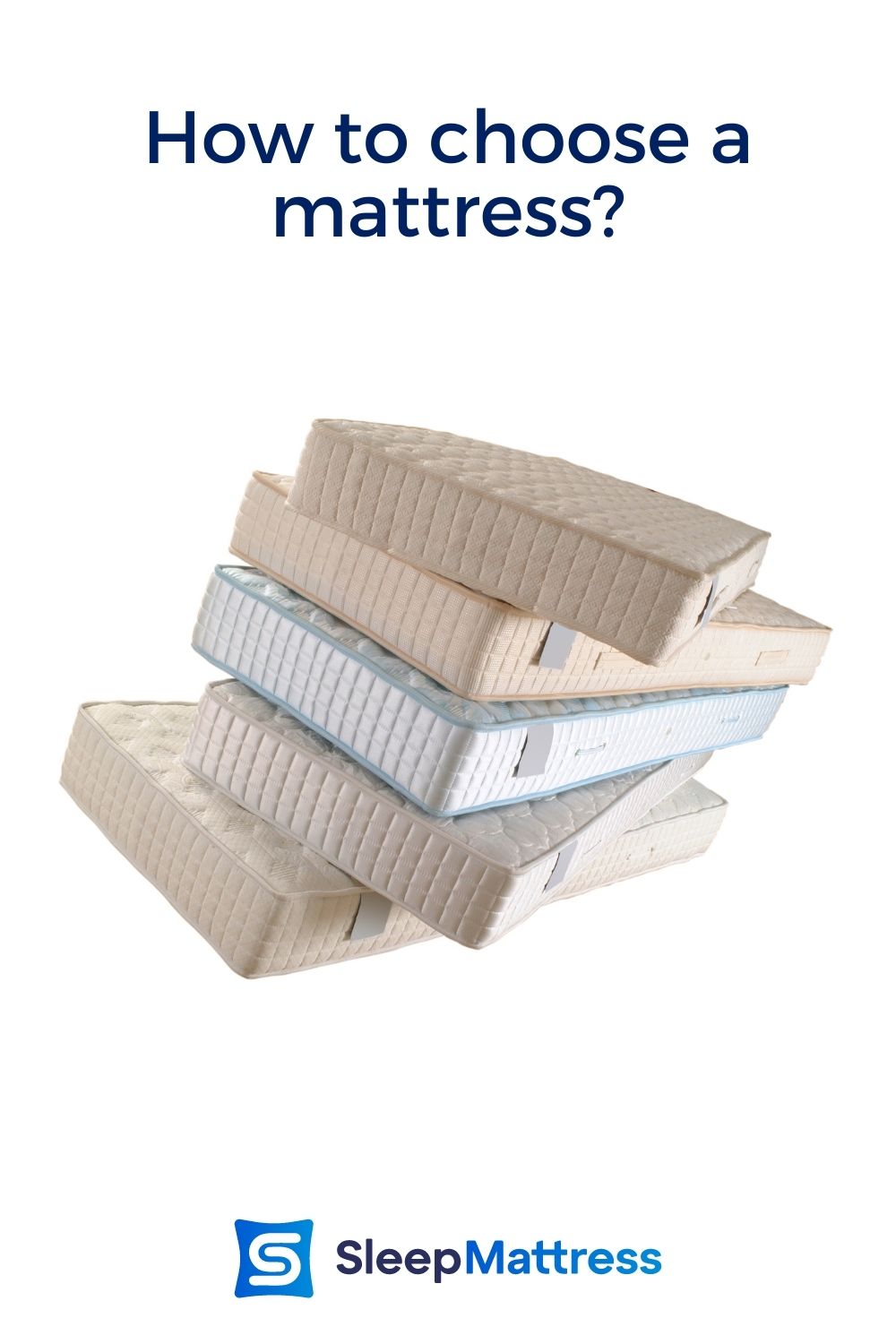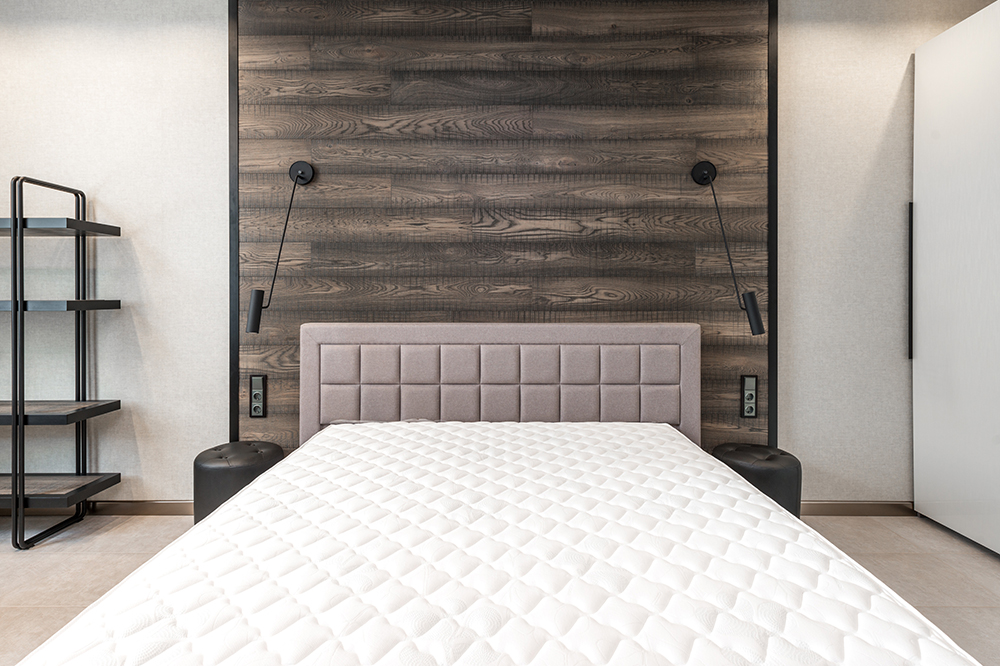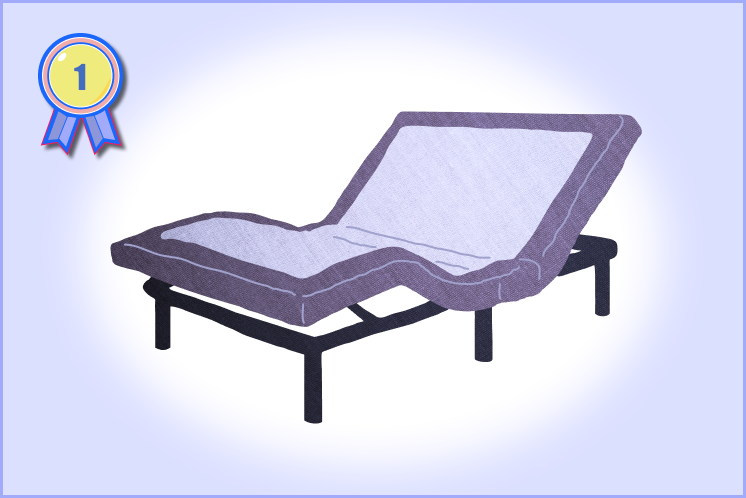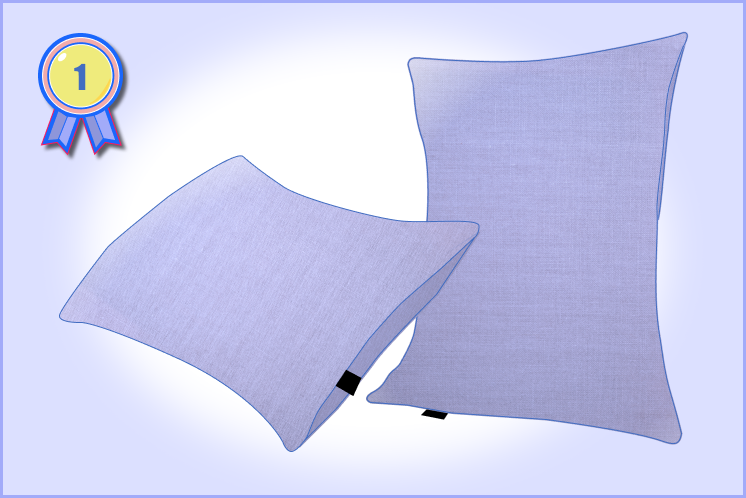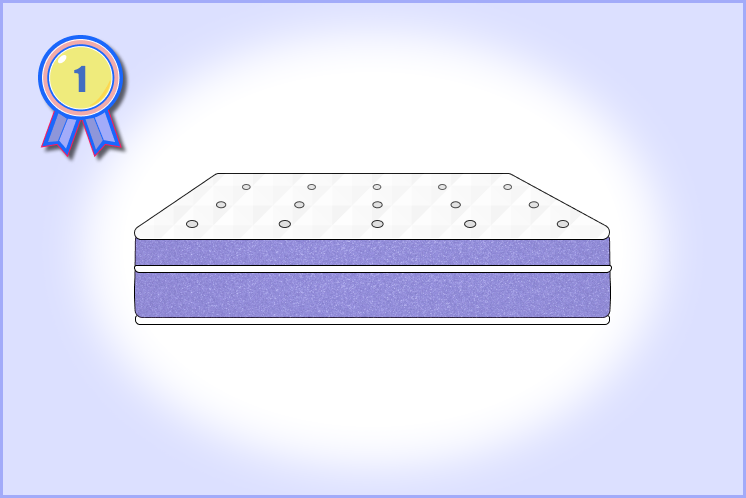Your current mattress might not be meeting your unique sleeping needs. Does it feel too flimsy and not offer enough support? Do the springs squeak and creak whenever you so much as turn over? Whether your mattress is too firm, too soft, too noisy, or leaves you feeling way too stiff when you get up in the morning, it might be high time for a new mattress.
You might be tempted to buy a cheap one – or even get one for free – from Facebook Marketplace or Craigslist. But, seriously, don’t. Used mattresses can come with all kinds of problems, ranging from a lack of proper support to (ew) bed bugs.
To get a brand new mattress, you will have to invest some hard-earned money. But a mattress is a long-term investment. Learning how to choose a mattress can help you make the right decision the first time. Therefore, dear reader, read through the entirety of this buyer’s guide to mattresses so that you can get the mattress that works best for you.
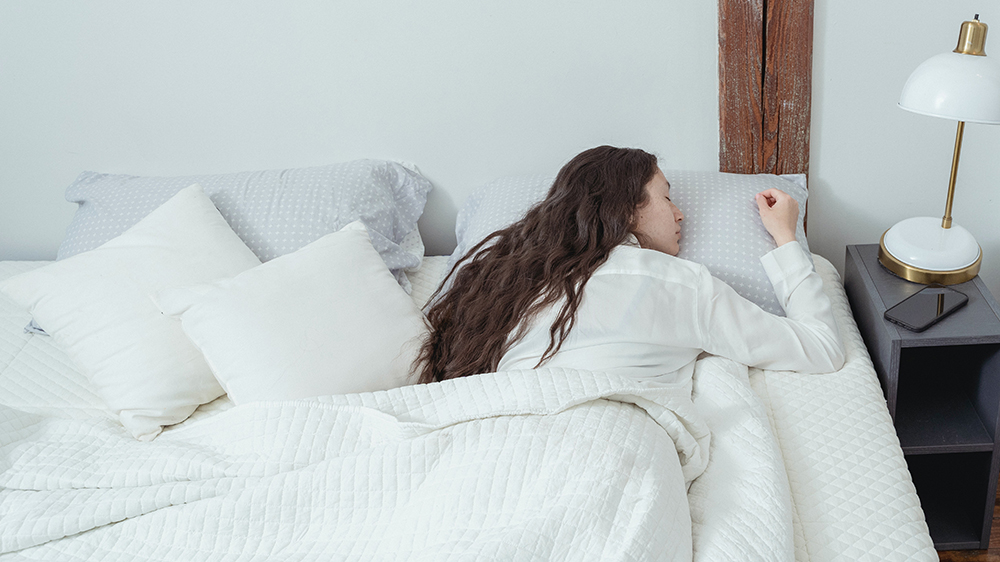
First, Let’s Check If You Need a New Mattress
In guiding you on how to choose a mattress, I want to start off by checking in with you on how your current mattress is – or isn’t – holding up.
Your Mattress’ Age
Let’s just get this out of the way. If your mattress is eight years old or older, you should probably think about buying a new one. Sure, some mattresses can hold up well for about 12-15 years, but the eight-year benchmark is typically where moderate-quality mattresses start to become problematic.
Mattress type plays a big role in how mattresses age. Latex can last the longest, holding out until about 12 years. Memory foam and hybrids last about 10 years. Innersprings generally last for eight years, but pillow-tops might only make it until about seven.
Be sure to read through the Mattress Lifespan Graph/Table so that you can clearly see how a mattress tends to age.
| Mattress Type | How long you can use it |
|---|---|
| Pillowtop | 7 years |
| Innerspring | 8 years |
| Hybrid | 10 years |
| Memory Foam | 10 years |
| Latex | 12 years |
Your Sleeping Position
Your mattress might not accommodate how you sleep. Extra firm mattresses sometimes work best for back and stomach sleepers, but side sleepers need the contouring that a medium-firm mattress can offer. And, let’s face it, there are going to be a few of you side sleepers out there who actually need a soft mattress for even more contouring. If you need more or less contouring for your sleep position, it is probably time to rethink your current mattress.
Firmness Level
Did you know that there is an actual firmness scale for mattresses? If your mattress is rated 5-6 on that scale, it is considerably soft. A 6-7 would give you a medium firmness while an 8-10 would feel extra firm. Of course, “firm” is a feel that the mattress has, and that feel is subject to individual interpretation. Your current mattress might be a medium firm, but perhaps you need to go up to something extra firm due to a need for support or relieve from back pain.
Your Weight
As much as I hate talking about my weight, I will admit that it influenced my decision to buy an extra firm mattress. I’m a heavy sleeper, so I ended up going with a hybrid mattress that sits right at about an 8 on the firmness scale. Lighter sleepers won’t sink into a soft mattress, and average sleepers often look for soft to medium mattresses. But the combination of your overall body weight composition and sleep position could make your needs rather unique.
Mattress Type
There are multiple types of mattresses, as we will soon discuss in more depth. If you need more contouring, a memory foam mattress might be right up your alley. However, they sleep hot. A latex, hybrid (with cooling gel technology built in), or innerspring mattress will sleep cooler. Your current mattress type might have you sweating up a storm, which could be interrupting your slumber.
Your Budget
Budget constraints are a huge issue here. Please, whatever you do, don’t go cheap and easy on a mattress. Take your time, save up, and invest in a long-term commitment to better slumber. Truth be told, you get what you pay for when it comes to mattresses. Learning how to pick a mattress means budgeting. Also, name brands can produce some faulty advertising, so don’t buy into anything that sounds too good to be true.
Also, consider the warranty coverage. Many bed-in-a-box mattresses have lifetime warranties, which is absolutely optimal. And be sure to always read the fine print before you buy.
Shopping during the holidays can result in big-time savings. Many mattress brands launch their sales around Labor Day, Memorial Day, President’s Day, and Black Friday.
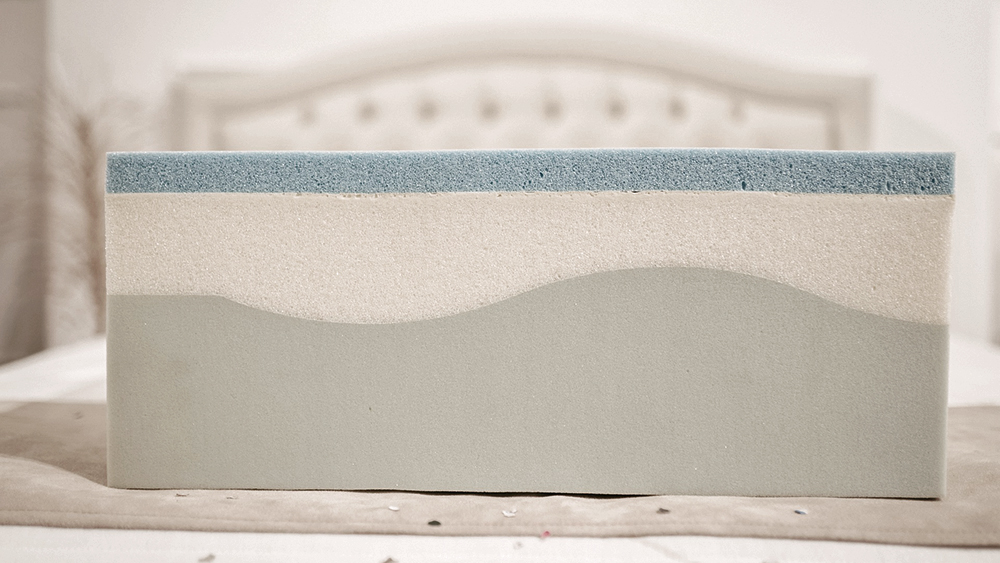
Mattress Types
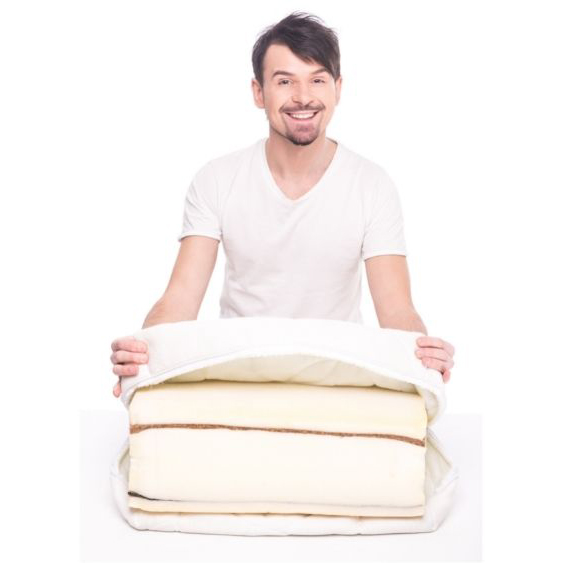
Foam
There are quite a few types of mattresses to choose from. One of the most popular is foam. Memory foam has a slow pressure response and provides a deep contouring embrace all around your body. If you need pressure relief in your shoulders, hips, or knees, a memory foam mattress could be beneficial. Unfortunately, they trap heat worse than any other mattress type.
Best For
- Memory foam mattresses are best for those who want to feel enveloped in their mattress. Side sleepers tend to require this amount of contouring to keep their joints locked securely into place while they rest.
Worst For
- Back and stomach sleepers, memory foam might not be for you. You might want an ultra-firm mattress to give you the stiffer support your body needs.
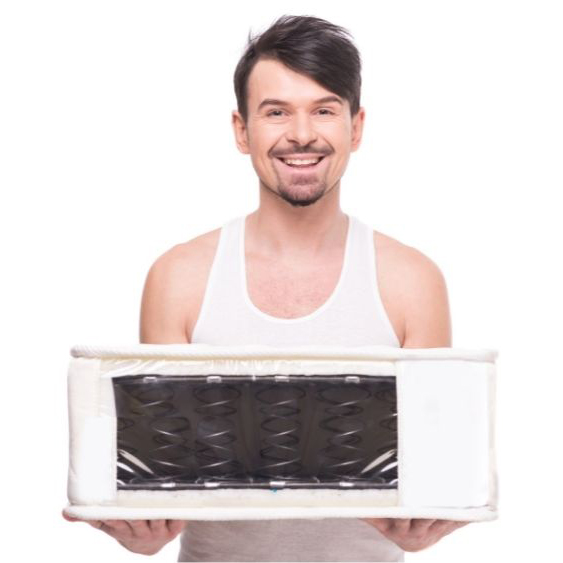
Innerspring
Innersprings are bouncy while also being firm and supportive. They feature tall sections of steel coils that promote airflow and have that old-school mattress feel.
Best For
- Back, stomach, and heavier sleepers tend to do well with this vast level of support. They also go over well with folks needing a bit of bounce.
Worst For
- Got shoulder, hip, or back pain? Innersprings won’t give you the pressure relief those areas need.
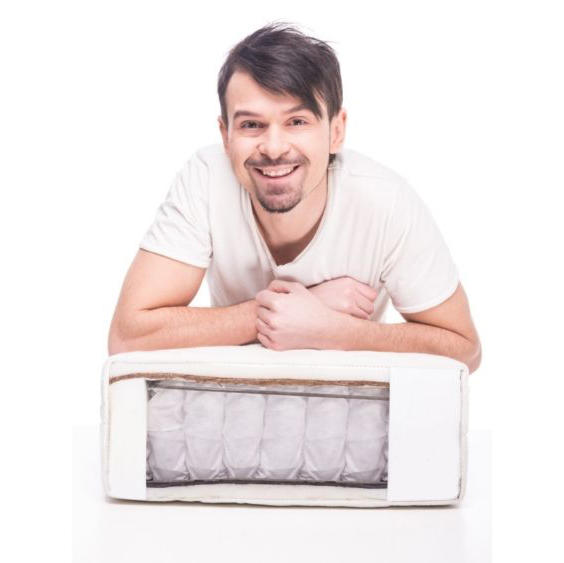
Hybrid
Hybrids are types of mattresses that are pretty new to the market. Their top foam (or, on occasion, latex) layers are paired with springs or coils to deliver a solid combination of support and pressure relief.
Best For
- Back and combination sleepers (those of you who change positions often) get a nice blend of support while also having pressure relieved from critical areas. They get enough mobility and bounce without it feeling excessive.
Worst For
- Hybrids tend to work well for a diverse array of sleepers. Back sleepers do better with latex tops while side sleepers often prefer the memory foam hybrids. It all depends on what is in that top layer.
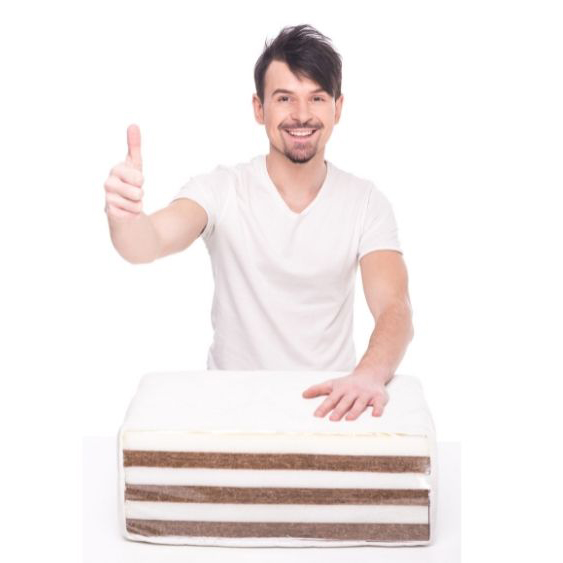
Latex
Latex mattresses are bouncy and therefore have a rapid pressure response. If you prefer something eco-friendly, then this all-natural product – which will come with an organic cotton covering – might be right for you.
Best For
- Combo sleepers tend to do especially well with latex mattresses. The natural degree of bounce leaves them open to move around as they sleep. And, of course, environmentally-conscious folks dig them.
Worst For
- Latex doesn’t contour like memory foam, so side sleepers might not dig latex. You won’t get that immense pressure relief in the hips and shoulders.
Airbed
Airbeds are neat because you can customize your firmness level. Some people use them to alleviate back pain when regular mattresses fail. Also, since they typically have two inner chambers, if you share a bed with someone who needs more or less firmness than you, you can each customize your own settings.
Best For
- While I don’t necessarily recommend an airbed for long-term use, they can help some folks with back pain. They’re more suited for those needing to customize their firmness level, especially if there is a co-sleeper.
Worst For
- They tend to be thin and low to the floor, so people with achy or stiff joints need not apply. They can be hard to get up from.
Waterbed
Yes, waterbeds are still a thing, but nowhere near as popular as they were in the late 1980s to early 90s. My parents had one, and it felt like I was swimming in a vast ocean. But it was not the most comfortable thing to sleep on.
Personal anecdote aside, waterbeds strictly conform to your body. They’re also hypoallergenic, which is a huge plus for allergy sufferers. Also, they are remarkably quiet. No squeaking springs to worry about.
Best For
- Waterbeds are best reserved for families of allergy sufferers and those who require a quiet night’s rest. They are also optimal for those needing contouring.
Worst For
- Waterbeds are not recommended for people who get lightheaded when lying down. They are also not recommended for those needing any support. And, of course, there is always the risk of them springing a leak.
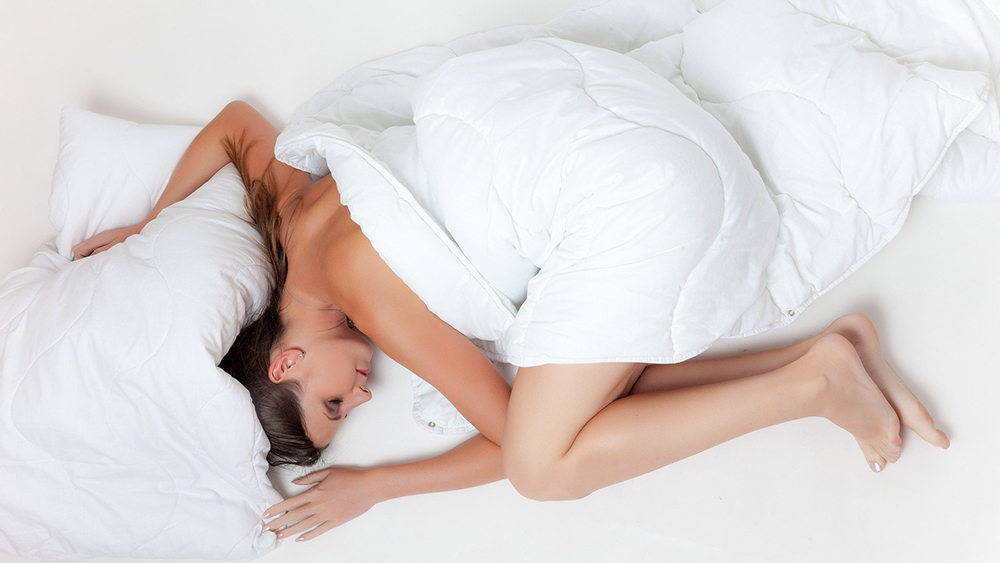
What is Your Sleeping Position?
Everyone has their own unique sleep style. Some of us prefer to sleep on our stomachs while others feel better on their backs. Other folks sleep on their sides. Then there are plenty of sleepers who just roll around into an array of different positions each night and have no side preference.
Why is this important? Well, most mattresses cater to certain types of sleepers. As you might have already learned from your own personal experiences, the firmness of a mattress can make a difference depending on your sleep position.
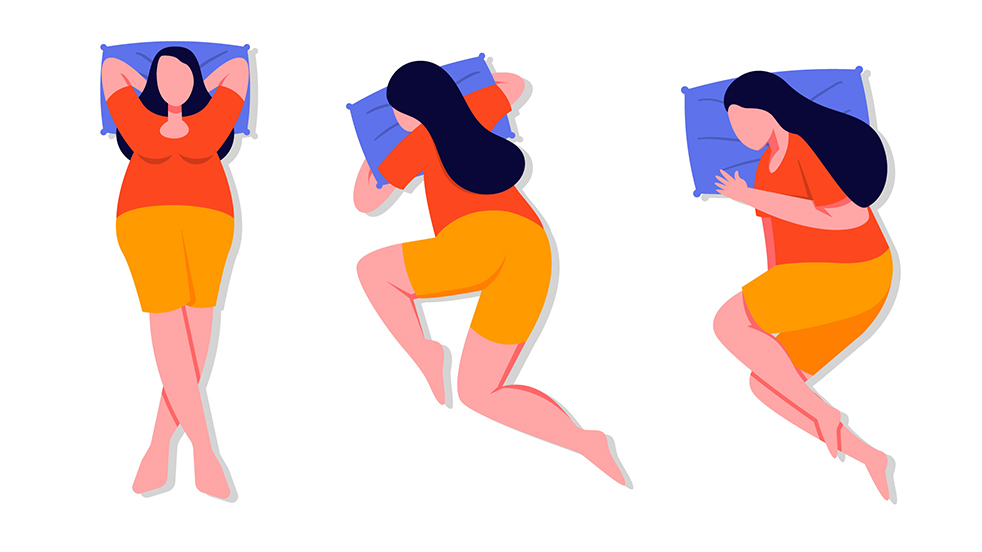
Back Sleepers
Back sleepers cannot usually stand mattresses that are too firm or too soft. That is why a medium-firm mattress will often work best for them. Tension at the lower back and shoulders results from a too firm mattress, and one that is too soft will have their shoulder and hips misaligning, which can trigger shooting pains going up the back. With a medium-firm mattress, they get the most well-rounded support and comfort.
On the firmness scale, a mattress that slates between 5.5-7 should work best. (Just for reference, a 6.5 is considered the industry standard for medium firmness.) This helps lift and set the spine into a neutral position (an even line from the shoulders to the hips). For fibromyalgia and other chronic pain sufferers, this can alleviate pain, tension, and stiffness throughout the back.
Hybrid mattresses present the best of both the innerspring and memory foam (or latex) worlds, which is why they so often go over well with back sleepers.
Side Sleepers
Side sleepers need some serious pressure relief in the hips and knees. They need a mattress that will conform to their bodies, cradling them gently in place throughout the night. A softer mattress ranging from 4-6 on the firmness scale often suits them best because of how much cradling they deliver.
Side sleepers exert a lot of pressure on their joints at night, so they need a bed that will go easy on them. That is why many choose a memory foam mattress. They have a deep sinkage, enhanced contouring capabilities, and pressure relief.
Stomach Sleepers
Opposite of what side sleepers need, stomach sleepers need a mattress that is extra firm. They require an extra firm mattress because it can lift their hips to keep them aligned with their shoulders. A 7-9 on the firmness scale is most ideal for them.
But, of course, you still do not want a rock solid mattress. A hybrid or innerspring mattress will go over well since they can be quite firm without being too uncomfortable for stomach sleepers. The pillow tops or quilted cover layers blend comfort with the firm support offered by tall sections of supportive coils.
Combination Sleepers
Combination sleepers will have the hardest time trying to find the right mattress. Generally speaking, I would recommend sticking with a medium firm mattress that sits right around the industry standard of 6.5 on the firmness scale.
Providing pressure relief and support in tandem, a medium firm mattress is soft enough for pressure relief in the shoulders when side sleeping and firm enough for hip support while back sleeping. Latex and memory foam mattresses will likely suit the needs of combo sleepers the best.
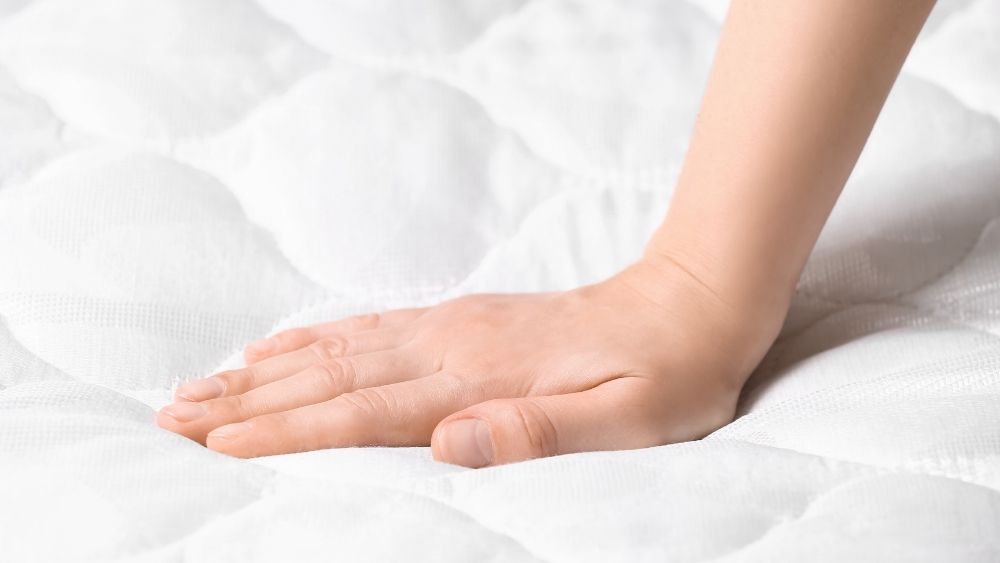
Mattress Firmness
As mentioned above, knowing how to choose a mattress involves understanding mattress firmness. The mattress firmness scale ranges from 1-10, with 1 being the absolute softest and 10 obviously being the most firm. The average sleeper tends to prefer a firmness of 4-7 on that scale, but everybody is different. Firmness really only refers to the “feel” of the bed, which can be subjective from person to person. What I might think is too soft might not be soft enough for you.
You will want to consider a few factors in determining your mattress’ firmness. When looking at firmness and types of mattresses, first consider your weight. Heavier sleepers tend to need more firmness than lighter sleepers who won’t sink into the bed as much. Also, think about the type. Memory foam is on the softer side while latex and innersprings are firmer. Hybrids tend to hover right in between. If your current mattress is a 5.5 memory foam and it feels too soft, try going up the firmness scale to about a 7.
| Firmness Scale | Firmness Level | Recommended for |
|---|---|---|
| 2 | Extra Soft | Kids and side sleepers under 130 pounds |
| 3 | Soft | Kids and side sleepers under 130 pounds |
| 4 | Medium Soft | Kids and people under 130 pounds Side sleepers between 130 and 230 pounds |
| 5 | Medium | Side and back sleepers between 130 and 230 pounds |
| 6 | Medium Firm | People between 130 and 230 pounds Side sleepers over 230 pounds |
| 7 | Firm | Side sleepers over 230 pounds Stomach and back sleepers over 130 pounds |
| 8-9 | Extra Firm | Stomach and back sleepers over 230 pounds |
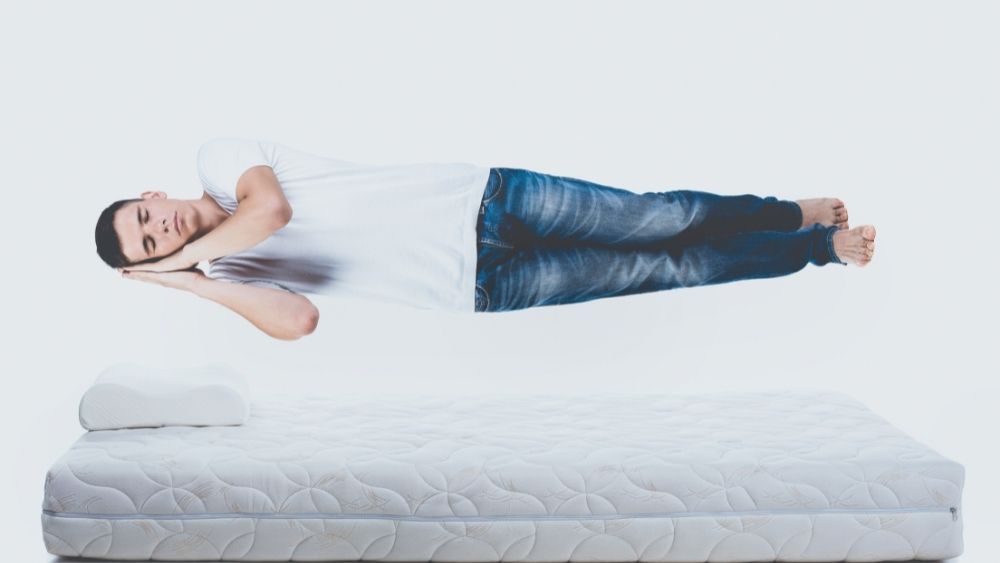
Mattress Support
Finding the right bedding support is essential. A foam mattress can provide ample support for a lighter sleeper. They are soft and cradling, which is what a lighter sleeper typically needs. Coils bode better for those of us heavier sleepers.
Support does truly encompass how much you sink into the bed. You might wish to rest firmly on top while someone else might enjoy sinking in a bit more. Anything with a coil system – such as an innerspring or hybrid mattress – will offer that stiffer level of support for your spine.
Also, you are going to need some superb edge support. This might not be something you’ve thought about up until now, but it is important. If you sit on the edge to dress, have a partner who sleeps in bed with you, or if you roll around a lot during the night, you’ll want high-quality edge support.
Otherwise, the bed might feel like it is giving way when you sit on the edge. If your partner (or, lets face it, kids, and/or canine companions) pushes you to the edge while sleeping, you might wake up feeling like you are about to fall off.
Reinforced edges give optimal edge support. Pay attention to customer reviews too, as those give some strong indicators of how much overall support a bed really provides.
Your Body Type and Weight
As already mentioned, your weight and body type influence how you sleep on a given mattress. It stands to reason that the more you weigh, the more you will sink into a softer mattress. That’s just how science works. That does, of course, make finding the right mattress a bit of a chore. You might actually need a rather specific mattress type.
Just for reference’s sake, I am going to refer to three groups here: light sleepers (weighing 150 lbs. or less), average sleepers (those weighing 150-200 lbs.), and heavy sleepers (weighing over 200 lbs.). I myself range in the heavy category, so believe me, there is no weight-based judgement here! But these categories should prove helpful in determining how to pick out a mattress.

Light Sleepers
Not all sleepers within the same weight range sleep the same. So these mattress recommendations here are based on certain feels these sleepers might be after. And we’re going to start with the light sleepers.
Soft Feel (4-6/10 on the firmness scale)
Landing on a soft mattress might feel like falling into a fluffy cloud for you. Unlike heavier sleepers, though, you won’t sink through the material layers. An all-foam bed with a memory foam comfort layer on top might suit you nicely.
Medium Feel (5.5-7/10 on the firmness scale)
Beds with highly dense layers will probably feel uncomfortable for you, but a few supportive layers might do the trick. You might want to go with something about .5-1 point below the feel you need since medium-firm mattresses are built more for average sleepers weighing around 180 lbs.
Firm Feel (7-9/10 on the firmness scale)
Want a firm feel? You’re going to need to focus on finding a mattress made with thin comfort layers. A basic quilted comfort cover or pillow top layer will likely do. You won’t sink as much through top foam layers.
Average Sleepers
Here are my recommendation for those of you weighing about 150-200 lbs.
Soft Feel
Like a light sleeper, you need something more plush, especially if you weigh closer to 150 lbs. For those who are closer to 200 lbs., think about a mattress with thick top layers made from memory foam to give you ample cushioning.
Medium Feel
This is likely to be the most efficient way to satisfy an average weight sleeper. Most mattresses are made with medium firmness and average weight sleepers in mind, so you can find an abundance of these types of mattresses on the market. The balance of support and comfort layers should feel just about right.
Firm Feel
You might want something with thicker support layers and fewer comfort layers if you’re vibin’ for a firm feel. As an average weight sleeper, you will press into the surface more than a light sleeper and will need those added support layers in the base.
Heavy Sleepers
Ah, my fellow heavy sleepers. This is for those of you who, like me, come in at over 200 lbs. and struggle to find the right mattress feel. Manufacturers often don’t construct mattresses with us in mind, so we have to be aware of that fact before starting our quest for the perfect mattress.
Soft Feel
A taller bed is going to help if you want a soft feel. It will have a sturdy coil section underneath dense top layers of foam. You’ll need at least 4-5 inches of top foam to sink into without sinking too far.
Medium Feel
Top layers of foam should still be thick, but lessen them by 1-2 inches. A 7-8 range is most ideal for a firm feel for heavy sleepers. Light and average sleepers might find this to be too firm, but heavy sleepers often prefer it.
Firm Feel
Not all heavy sleepers like an extra firm feel, but some love it. An innerspring mattress featuring a pillowtop layer gives a firm feel while providing comfort. Look for one that is in the 8-9 range.

Price and Budget
Most folks don’t have money to throw around on high-end mattresses. It takes some saving-up. Consider your budget as you move forward with your search. Different types of mattresses can be more or less expensive than others based on materials used. Pricing also factors in things like the manufacturer’s reputation.
Expect to pay $600-$2,000 for a quality mattress. Remember, you get what you pay for in the mattress world.
| Average Price Range (Queen) | Mattress Type | Pricing of Popular Models |
|---|---|---|
| $600-1,100 | Innerspring | Zinus Quilted Spring Top ($260) Saatva ($1,199) |
| $900-1,300 | Foam | Tuft & Needle Original ($595) Casper Original ($995) Tempur-Pedic ProAdapt ($2,999) |
| $1,500-2,000 | Hybrid | Dreamcloud ($1,299) WinkBed ($1,599) Brooklyn Bedding Aurora ($1,699) |
| $1,600-2,000 | Latex | Avocado ($1,399) Zenhaven ($1,899) PlushBeds Botanical Bliss ($2,999) |
| $2,000-2,400 | Airbed | Sleep Number c2 ($999) Saatva Solaire ($2,695) Sleep Number p6 ($2,899) |
Innerspring
Innersprings tend to be the cheapest mattresses since they’re in such high demand. Their prices range (on a queen, that is) from $600-1,100.
Foam
The average price range for a queen foam mattress is $900-1,300. It is more expensive than the innerspring but cheaper than a hybrid.
Hybrid
Hybrids are the middle-of-the-pack in terms of price. For a queen, they can go from $1,500-2,000.
Latex
Latex beds have naturally sourced, organic materials, which make them pricier options. A queen latex mattress can cost on average $1,600-2,000.
Airbed
Airbeds are the most expensive mattress models. While cheaper ones price around $1,000, most queen-sized airbeds cost $2,000-2,400.
Pain
Okay, fellow chronic pain survivors! This is the part where we get really critical of mattresses. Who wants to wake up in even more pain than when they went to sleep? Let’s talk about a few pain-related factors.
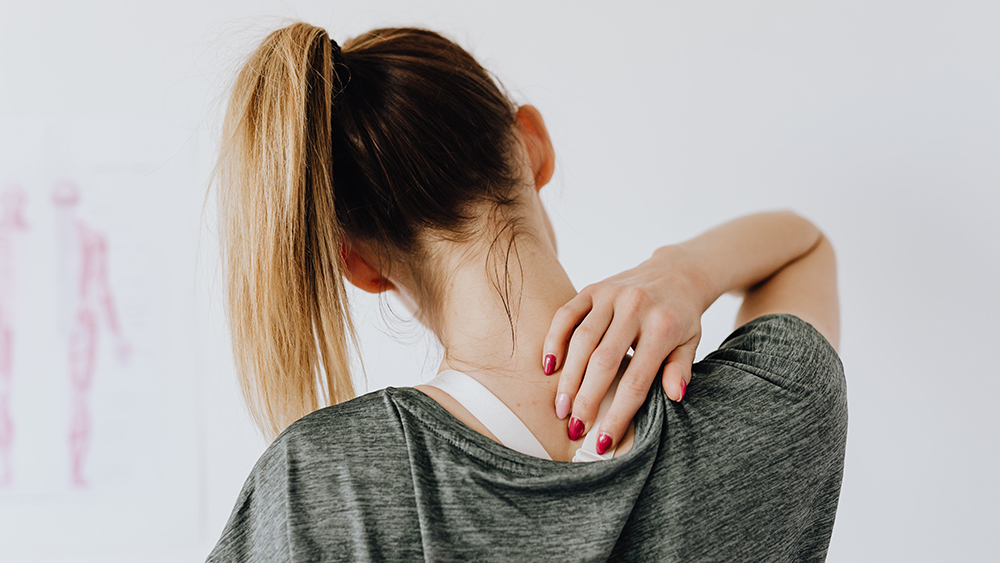
Sleeping On a Bad Mattress
Sleeping on a bad mattress can result in you waking up with back and neck pain. Your old mattress might have lost its ability to support your spine in a neutral position. If you’re already a chronic pain survivor, that can just take your pain from bad to worse.
Extra or Medium Firmness?
Some doctors will tell you that, if you have bad lower back pain, you should sleep on an extra firm mattress. However, some research suggests that a medium-firm mattress can enhance your overall sleep quality while providing ample support. This can help with musculoskeletal pain, reducing your fall-asleep time and providing crucial pressure relief on your joints.

Important to Consider
Now, let’s hone in on the important factors you need to consider when buying your next mattress. Some of these points will rank higher on your “must-have” list than others, but do take time to consider all of them.
Pressure relief
Pressure relief is often best provided by memory foam mattresses. If your key pressure points need relief at the end of each day, find a mattress that gently conforms to your body when you lie down on it. Hybrids with foam layers can also work well.
Mattress height
10 inches is the standard mattress height. Those shorter than it will not offer much support. Taller isn’t always better though, since a lighter sleeper won’t need the extra support. Those mattresses end up feeling to firm for them. Also, note that most standard bed sheets only fit up to a 14-inch mattress. Taller mattresses will likely require new bedding.
Motion isolation
Got a co-sleeper? Motion isolation is crucial for a good night’s rest. This prevents you and your co-sleeper from feeling one another’s movements at night. Foam mattresses are the best equipped to do this, but hybrid ones can get the job done too, as can some innersprings.
Temperature
Foam mattresses sleep hotter, which can disturb your sleep if you naturally sleep hot. If you want to sleep cooler, find a mattress with cooling technology. This technology includes air cell or open-cell foam, phase-changing/moisture-wicking/stay-cool fabrics on the covers, and/or gel infusions in the top foam layers.
Off-gassing
The mattress-in-a-box market has skyrocketed in recent years. You unbox, remove the plastic wrapping, and let your mattress inflate itself over the course of a day or two. Unfortunately, brands that use harsh chemicals in their mattresses produce off-gassing – that overwhelming chemical odor that smacks you in the face.
Even with CertiPUR-US certification (which means no heavy metals or toxins were used), there can still be a stench. Pay attention to customer reviews that mention off-gassing and how long it takes to dissipate.
Materials
Want to go organic? Great! Just expect to pay more. Reputable manufacturers will clearly state that they have natural or organic certifications. Look for the following certifications:
- Global Organic Latex Standard
- Global Organic Textile Standard
- Organic Content Standard 100
- USDA Organic
- Rainforest Alliance Certification
- Greenguard Gold Certification
- Made Safe
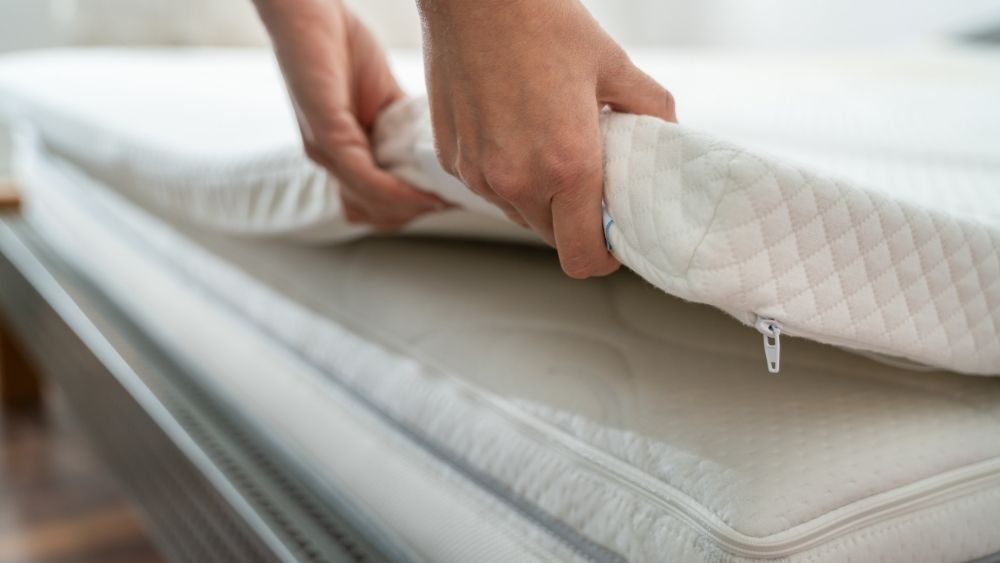
Should I Buy a Mattress Topper?
A mattress topper serves as an extra layer of padding that goes either over or below a fitted sheet. They are usually somewhere from 2-5 inches thick and are made from diverse materials, such as wool, down/feathers, memory foam, convoluted polyfoam (the egg crate design), or latex.
What might make you a good candidate for one?
Too-Firm or Too-Soft Mattresses
If your mattress is too soft or too firm, toppers can even it out. They come in soft, medium soft, or medium feels. They even help firm up your mattress.
Prolonging Your Mattress’ Life
Body impressions and deep sagging are why people get new mattresses. A mattress topper can preserve the mattress from this gradual wear-and-tear.
Frequent Back Pain
Memory foam toppers are particularly adept at providing relief for back pain if your mattress isn’t doing the trick.
A Too-Short Bed
Some of us don’t do well with short beds. Getting in and out of bed can be made easier with the added thickness a mattress topper provides.
Sleeping Too Hot
Mattress toppers have breathable layers, especially the wool and latex variety. If your mattress is too hot at night, try one of these for a cooler night’s rest.
Tips to Choose a Mattress for a Child
Alright, parents, time to turn our attention to buying a mattress for a child. Sounds easy enough, right? But that isn’t always the case. You have a few things you need to consider too when finding out how to choose a mattress for your child.
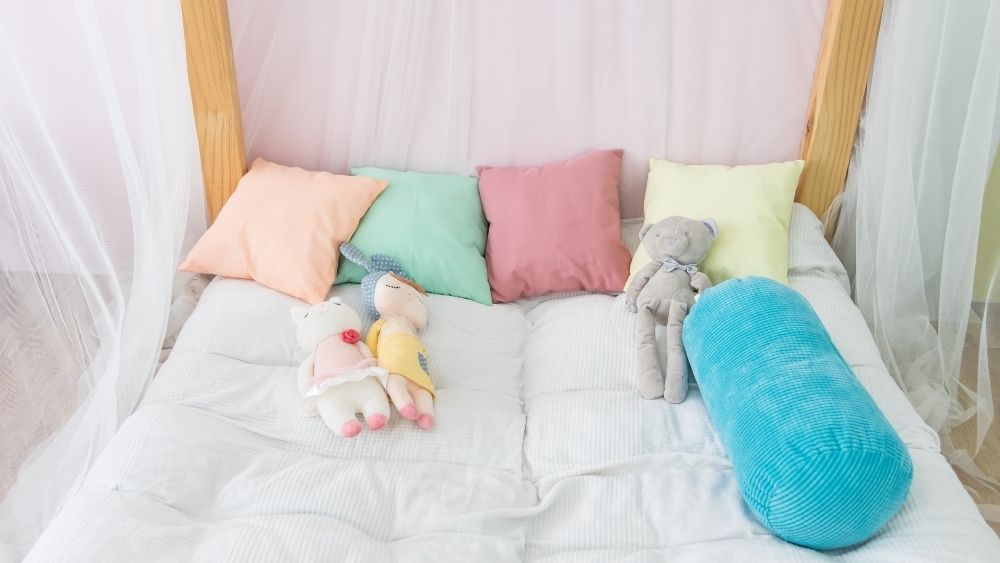
Price
If your child hasn’t hit the teenage years, don’t spend too much money on a mattress. They’ll likely outgrow it come their teen years. A solidly-built, budget-friendly mattress should suffice.
Size
Most kids under the age of 13 do well on a twin mattress, which measures 38 inches wide by 75 inches long. Older/taller kids might need a Twin XL, which is 80 inches long. A full size (53 inches wide by 75 inches long) will fit fine if the room isn’t too small.
Thickness
Smaller children need lower-profile mattresses so they can climb in and out with ease. Don’t buy anything very thick.
Mattress Type
All-foam and innerspring mattresses are the least expensive types of mattresses. Innersprings are a little bouncier and better if your kid craves some support. If your child likes a little more sinkage, an all-foam should do.
Bed Sharing
As a parent of twins, I’ve dealt with bed sharing, and let me tell you, you might need to go big. Queen mattresses should do for just two average-sized children, but a full can function well enough for two tiny tots. A bunk bed might be ideal so you can save time and appeal to your kids’ sense of playfulness.
Safety
The U.S. Consumer Product Safety Commission (CPSC) has stringent safety guidelines for children’s bed manufacturers – especially for bunk beds. From guard rail dimensions to ladder safety, manufacturers have to follow strict guidelines. Single beds are safer, of course, but bunk beds are relatively safe as well. There are even bunk beds designed for small children needing extra safety.
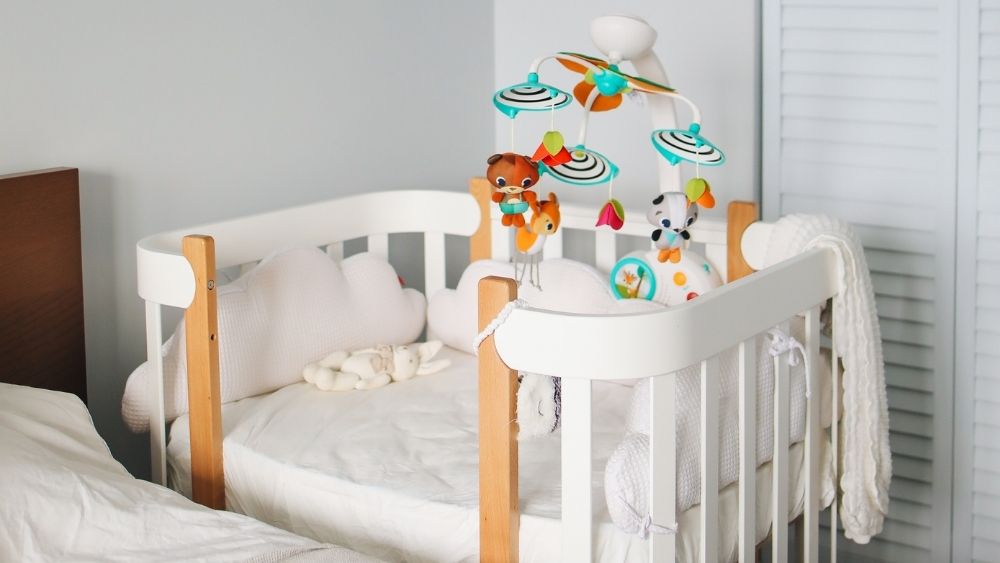
Tips to Choose a Crib Mattress
I’m going to share some qualifications listed by the American Academy of Pediatrics (AAP) for crib mattresses. New parents, always proceed with caution when buying a crib and mattress.
Firmness
Infants need firm mattresses to reduce the risk of blocked airways should your tiny one roll over onto their stomach.
Sleeping On the Back
Until they’re one year old, babies need to sleep on their backs. Some seem to enjoy refusing this. Aside from you correcting them, a wide and long enough mattress will help keep your baby on their back.
Liquid Absorbency
We all know full well that diapers spring leaks during the night, and babies also tend to drool a lot. A crib mattress needs to be waterproof to ensure this stuff doesn’t seep in.
Room Size
Make sure the crib fits in your bedroom, as your baby should be sleeping in there until they reach about six months of age. Then, you need to consider the nursery size.
Bed Sharing
As the AAP advocates, the safest place for babies is in their own cribs, not with you or anyone else. And definitely not in a chair or on the couch. Those are major fall risks.
Crib Accessories
Soft bedding and toys can get into your baby’s mouth or even around their neck at night. Use only a fitted sheet and dress your baby in reasonably warm sleepwear.
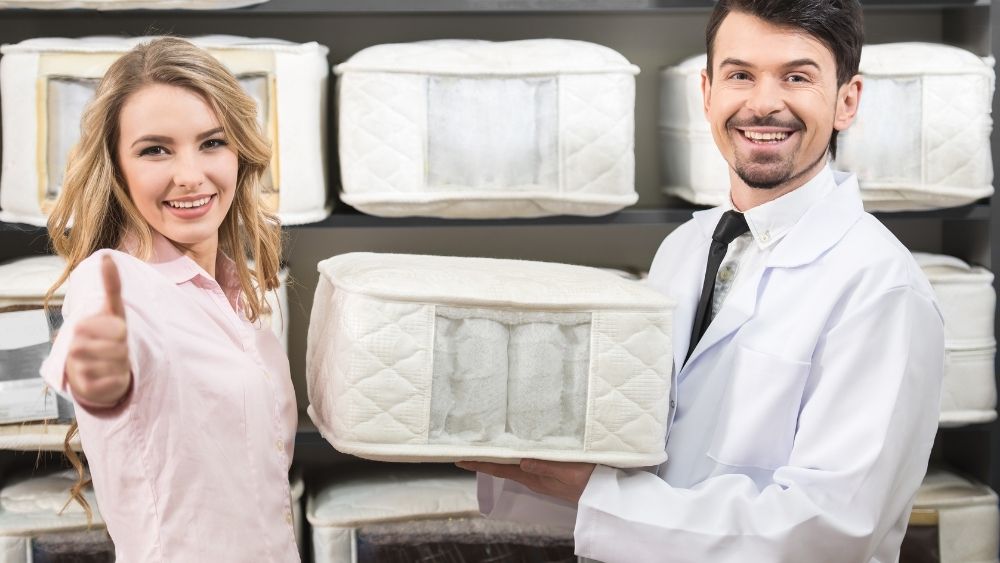
Mattress Buying Made Easier
Now that you know how to choose a mattress, you can set out to find the one that works best and falls within your budget. Just remember, cheap mattresses are rarely good mattresses. In the realm of mattresses, you get what you pay for. But you certainly need not spend a small fortune on a high-end mattress.
Sure, shopping online (versus in a brick and mortar storefront) makes the buying process complicated, but most companies offer free shipping, returns, and even White Glove delivery. Take all these factors into consideration as you go forth.
